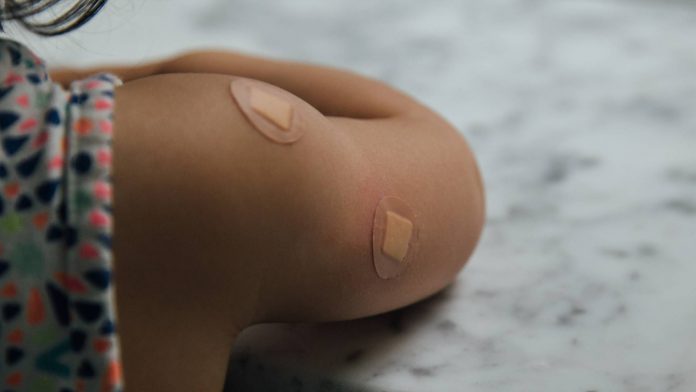Did you know that between 2010 and 2015, around 10 million deaths were prevented thanks to vaccination? This data comes from the World Health Organization (WHO), who emphasized that millions more lives were spared from diseases because of immunization programs carried out around the world that helped administer life-saving vaccines.
Immunity, developed when weakened antigens administered to the body through vaccines trigger antibodies to help fight them off, should be sought as early as possible, according to the Centers for Disease Control and Prevention (CDC). As children’s immune systems develop, vaccines can also safely develop their immunity against vaccine-preventable diseases (VPDs) such as measles, mumps, rubella, varicella, rotavirus, polio, tetanus, and diphtheria among others.
However, a decline in the vaccination rate in the Philippines in recent years has been observed. Further, due to the threat of COVID-19, many routine immunization schedules have been delayed or disrupted. According to the data of the Department of Health’s (DOH) National Immunization Program gathered in May 2020, the vaccination rate in the Philippines has hit an all-time low of 7% in the first quarter of the year due to the enhanced community quarantine (ECQ) brought about by the pandemic. Prior to ECQ, vaccination rates were recorded to be at a 16% average immunization rate per quarter — a far cry from the ideal target of 23-24% per quarter, with a cumulative target of a 95% vaccination rate per year to achieve herd immunity.

In a recent webinar, pediatric infectious disease expert Dr. Anna Lisa Ong-Lim, past president of the Pediatric Infectious Disease Society of the Philippines (PIDSP), reiterated the importance of vaccination, especially for infants and children. In her timely talk via the University of the Philippines (UP) Med Webinars, she cited the WHO April 2020 report discussing the possibility of secondary health crises emerging in the midst of the pandemic if routine immunization services were to be interrupted. This would then contribute even more to the economic damage brought about by the pandemic and could worsen morbidity and mortality rates.
“We are reminded that as we focus on COVID-19, we should not neglect the delivery of basic health care services, and that includes immunization,” emphasized Dr. Ong-Lim.
Decline in vaccination rate
“We were low to start with, and we’re going even lower from the start of 2019,” Dr. Ong-Lim stressed, on the topic of local vaccination rates. In 2019, the country experienced a measles outbreak which the DOH traced to vaccine hesitancy, or a delay or refusal in accepting recommended vaccination services despite availability. From January 1 to April 18 this year, there were 3,250 cases of measles – 98 percent higher than the 1,240 cases during the same period in 2019.
Dr. Ong-Lim cites further that “because of ECQ, [vaccination rates have] gone down to a concerning and alarming level.”
One of the factors for the steep decline of immunization rates during the COVID-19 pandemic is the delay of planned vaccination services due to lockdown guidelines. The United Nations Children’s Fund (UNICEF) has since stepped in by appealing to governments and concerned sectors to provide extra capacity to administer recommended vaccines to infants and children.
Health care workers and health care professionals also experienced delays owing to limited movements set by the community quarantine and were thus unable to report to their regular designations or were assigned to help with COVID-19 cases instead.
Additionally, many parents hesitated to bring their infants and children to hospitals, clinics or health centers due to fear of COVID-19 infection. “Parents are quite concerned with exposing their very young children to environments outside the home firstly because of restrictions of movement, also because of a well-founded concern about infection and perhaps a lack of information about whether these regular or basic healthcare services continue to be available.” Dr. Ong-Lim observed.
Addressing the decline of immunization rate
Dr. Ong-Lim shared in the webinar some valuable steps that can be taken to address the decline in vaccination rates.
Focusing on clinics, she encouraged clinicians and healthcare workers to adhere to the proper measures to reduce COVID-19 transmission, such as using Personal Protective Equipment (PPE) and ensuring thorough sanitation with each patient interaction. “Think through your clinic operations so that you can implement Infection and Prevention Control (IPC) measures.” Dr. Ong-Lim stressed. “It is our duty to start thinking about operations of the immunization practice and how we will administer it even before the patient comes into the clinic.”
Dr. Ong-Lim also discussed the vaccination guidelines released by the CDC, alongside healthcare facility safety measures to help parents prepare for when they bring their children for scheduled vaccination.
She shared a number of best practices applicable to parents: encouraging appointment settings versus walk-ins, appealing to clinics to set up signages to guide the patients along a single direction (one entry, one exit), and observing proper physical distancing at all times.
For those in areas where routine vaccination schedules have been interrupted, or where facilities have temporarily closed, she encouraged parents to bring their babies and children to their pediatricians for catch-up immunization as soon services are available. A focus on outbreak-prone vaccine-preventable diseases (VPDs) should be prioritized, according to Dr. Ong-Lim, which includes measles, polio, diphtheria, and yellow fever.
Immunization remains to be an important health intervention
Dr. Ong-Lim cited CDC’s reminder on the importance of immunization: “Unfortunately fewer childhood vaccines have been given during the COVID-19 pandemic and we are reminded once again that to avoid outbreaks of VPDs, it’s essential to continue to provide vaccinations and well-child visits.”
She further reiterated that every child still needs to be vaccinated, and that the current pandemic should not hinder parents from giving their children the immunization they need.
Vaccination remains as one of the greatest public health success stories in history. This health care invention has saved millions globally. Until now, it has been protecting many people from life-threatening diseases across all stages of life from birth to adulthood. Vaccination is second to clean water for its capacity to reduce the burden of infectious diseases.
As such, Dr. Ong-Lim stated with hope that, “As we continue to provide services for COVID, we will also remember that vaccines still need to be administered and provided, because it’s not the vaccines, but actually the action of vaccination that is really essential.”
“It will save lives.”





